Rose, like the true queen of the garden, requires special attention. If the growing rules are not followed or if weather conditions are unfavorable, roses develop various diseases caused by fungi, bacteria, and viruses. Treating rose diseases is always more difficult than preventing their development. Therefore, always try to take preventive measures to prevent diseases.
Disease Prevention
To protect these beautiful flowers from diseases, it is important to take a number of preventive measures:
- Pruning and destruction of weak and diseased shoots, dried leaves and other plant debris on which pathogenic fungi and bacteria can overwinter.
- To prevent diseases, rose bushes are sprayed with chemical and biological preparations with a wide spectrum of action: Alirin-B, Skor, Topaz, etc.
- Periodic inspections of rose bushes are necessary so as not to miss the onset of the disease and its spread to neighboring plants. An advanced disease is difficult to treat and can lead to the death of the rose.
- Do not overfeed plants with nitrogen fertilizers, and in the second half of summer, completely exclude nitrogen from fertilizing.
- Periodic fertilizing with potassium and phosphorus fertilizers increases the plant's resistance to disease.
Rose diseases are divided into fungal, bacterial and viral. This article provides descriptions, photos and methods of treating the following diseases:
Fungal diseases.
Bacterial diseases.
Viral diseases.
Powdery mildew
The spread of this disease is facilitated by dense plantings, prolonged summer rains, a large difference in day and night temperatures, and excessive application of nitrogen with fertilizing. First of all powdery mildew affects young green shoots and leaves.
Description of the disease
Fungal spores that fall on the plant germinate and form whitish powdery spots on the leaves and shoots, which gradually grow.The rose bush is covered with an ash-gray powdery coating. The leaves dry out, the shoots become deformed and stop developing.
Treatment options
- If signs of disease are detected, leaves and shoots with plaque should be immediately trimmed and destroyed.
- Spray the bushes with a 1% solution of colloidal sulfur. The working solution is prepared immediately before use. Take 100 g of sulfur per bucket of water. The foliage is sprayed from the top and bottom in dry, windless weather.
- For severe damage, the following drugs are effective: Skor, Topaz, Fundazol, Vitaros. Fungicides need to be alternated, because the fungus develops resistance to drugs.
Folk remedies
Traditional methods of treatment work at the initial stage of rose bush disease and as prevention.
- 4 g of soda ash is stirred in 1 liter of hot water, add 4 g of soap shavings. The resulting solution is sprayed onto the diseased plant twice at weekly intervals.
- A third of the bucket with fresh mullein is filled with water and left for three days. The mixture is stirred periodically. The resulting infusion is diluted with water 1:10 and sprayed on rose bushes in the evening.
- Mix 1 kg of ash with 10 liters of water and leave for two days. Add 40 g of soap shavings and spray the affected bushes twice with a week's break.
Prevention measures
- Timely removal and destruction of fallen leaves and weeds on which fungal spores may persist.
- From mid-summer, feed only potassium and phosphorus fertilizers. Excess nitrogen fertilizer reduces the resistance of roses to powdery mildew.
- In the spring after removing the cover and in late autumn, spray the rose bushes with a 3% solution of copper sulfate, 0.4% copper oxychloride or 1% Bordeaux mixture.
- Plant varieties of roses resistant to powdery mildew.
- Avoid dense planting of bushes.
Rust of roses
The disease is caused by a rust fungus, the spores of which are carried by wind or insects. Humid and warm weather favors the development of rust. This disease spreads easily and is difficult to treat.
Description of the disease
In the initial stage of the disease, bright red spots appear on the leaves of the rose. If you look at the underside of the leaf, you can see these orange sporulation tubercles in these places. This is the spring stage of rust fungus development.
With further development of the disease, the pustules acquire a brownish-rusty color. Yellow-red spots spread throughout the entire leaf blade, the leaves dry out and fall off. The shoots crack, bend and dry out. At the autumn stage of development, the pustules become dark. In this form, the fungus overwinters on infected parts of the plant.
Treatment methods
- All leaves and shoots with orange spots are cut off and burned.
- Spraying the rose and the soil around the bush with a solution of fungicides: Titan, Strobi, Falcon, Bayleton. Treatments should be carried out repeatedly with a two-week break, changing the preparations.
- Spraying roses with copper-containing preparations: hom, Bordeaux mixture, copper sulfate.
Folk remedies for treating rust
For 10 liters of warm water, take 1.5 kg of crushed milkweed stems. The mixture is infused for 24 hours in a warm place. The resulting infusion is filtered and used to spray the leaves.
Disease prevention
- Pruning and destruction of diseased plant parts and weeds.
- Spraying bushes and soil around in late autumn and early spring with a 3% solution of copper sulfate, 3% solution of iron sulfate.
- Autumn digging of the earth near the bushes.
Downy mildew or downy mildew of roses
Downy mildew is a fungal disease of roses that spreads in conditions of high humidity. Cool, rainy weather, sudden changes in temperature at night and during the day with heavy dew contribute to the development of the disease. The fungus reproduces by zoospores, which move quickly in water. For infection, a damp film on the leaves is enough for the zoospores to penetrate the stomata of the leaf and begin their destructive work.
Description of the disease
Downy mildew on roses appears as a light grayish or purple coating on the underside of the leaves. The fungal spores grow through the leaf tissue, and red and violet-brown spots appear on the surface of the leaf blade. The leaves turn yellow and fall off literally within two to three days. The disease primarily affects the upper young leaves.
With further spread, spots may appear on the shoots, the buds may become deformed, and the outer petals darken and fall off. In the hot, dry summer the disease stops, but closer to autumn it begins with renewed vigor.
Methods of treating the disease
- Destruction of infected leaves and shoots.
- For treatment, solutions of drugs are used: Ridomil Gold, Thanos, Alirin-B, Gamair, Profit. Spray roses and the soil around the bush every 10-14 days.
Traditional methods of treatment
- 1 liter of skim milk (skimmed milk) is mixed with 9 liters of water and 10 drops of a 5% alcohol solution of iodine are added. The resulting mixture is used to spray the bushes.
- Pour 1 glass of ash into 2 liters of boiled water, add water to 10 liters. Filter the solution and spray the roses.
Preventive measures
- Pruning and destruction of affected leaves, shoots and plant debris.
- In late autumn and early spring, spray with solutions of preparations containing copper.
- Fertilizing with potassium and phosphorus fertilizers improves plant resistance to disease.
Black spot or marsonina rose
Black spot is a common fungal disease of roses that develops in damp, warm weather, in dense plantings, and with an excess of nitrogen fertilizers.
Description of the disease
Black spotting begins to spread from the lower leaves to the top of the bush. Green shoots may also be affected. Dark brown and black spots with jagged, blurry edges appear on the foliage. The leaves turn yellow and fall off. Without treatment, the rose bush may lose all its foliage and remain bare. The shoots will not have time to ripen and prepare for winter. With a high probability, such a bush will die in winter.
How to treat the disease
- It is necessary to remove and destroy all damaged leaves and weak thin shoots.
- Spray with fungicides three to six times with a one-week break, alternating the preparations. Good results are given by Skor, Topaz, Profit Gold, Fundazol.
Traditional methods of treatment
Traditional methods are best used to prevent black spotting.
- Spraying with mullein infusion. 1 part mullein is mixed with 10 parts water and infused for several days.
- Pour 200 g of onion peel into 10 liters of water and heat to a boil. Leave for 8 hours. Strain the infusion and spray the rose bushes and the ground around.
Prevention
- Before covering roses for the winter, remove all foliage and weak shoots, clear the ground around of plant sediments.
- In early spring and late autumn, spray roses and surrounding soil with 3% iron or copper sulfate.
- Do not overfeed with nitrogen, but from mid-summer exclude nitrogen from fertilizing.
- Fertilizing with potassium and phosphorus fertilizers increases the resistance of plants to fungal diseases, incl. to black spotting.
- Spraying with Fitosporin serves as good protection against many fungal diseases.
Among the fungal diseases of roses there are leaf spots, which manifest themselves in much the same way as black spot: Septoria leaf blight, phyllosticosis of leaves, purple rose spot, grayish spot (cercospora). Determining what type of spot has affected a rose can be difficult. But all these rose diseases can be treated in the same way as black spot.
Infectious rose burn
An infectious burn develops in conditions of poor ventilation and high humidity. Such conditions are created under shelter during thaws in winter.
Description
In early spring, black spots with a characteristic red-burgundy border appear on the shoots. With further development of the disease, the spots increase and ring the stem, the bark cracks and peels off. Sick shoots inevitably die.
How to treat an infectious burn on roses
If signs of disease are detected, all damaged parts must be cut out to healthy tissue. Cover the cut areas with garden varnish. Severely affected shoots must be cut out completely. Spray the bush with a 1% solution of copper sulfate.
Preventive measures to prevent illness
- Before sheltering, you need to remove all leaves and weak shoots from the bush, and plant debris from the ground near the bush.
- Roses should be covered for the winter in dry, cold weather.
- Before covering, treat the bush and the soil around it with a 3% solution of iron sulfate or 1% Bordeaux mixture.
- In the spring, open the roses as soon as weather conditions allow and spray with a 0.4% solution of copper oxychloride (CHOM) or a 1% solution of Bordeaux mixture.
Bacterial diseases of roses
Bacterial root cancer
Bacterial root canker is caused by bacteria that live in the soil. Bacteria penetrate roots and shoots through cracks and wounds caused during planting or pruning with tools or caused by pests.
Description of the disease
Bacteria attack root tissue cells, which begin to divide uncontrollably. Light soft growths and swellings appear on the roots and root collar. They grow, become dark and hard. Subsequently, the growths rot. Plants affected by cancer develop poorly, wither and subsequently die.
Treatment of the disease
If cancer is detected early, you can try to cure the plant. The bush needs to be dug up and the roots and shoots with growths need to be cut off. Immerse the root in a 1% solution of copper sulfate for 5 minutes, then rinse with water and dip in a clay mash. It is better to burn severely affected bushes.
Preventive measures
Before planting roses, disinfect the roots in a 1% solution of copper sulfate, rinse in water, and dip in clay mash.
- Water the planted bushes at the root with a solution of Fitolavin or Phytoplasmin. Preventive watering can be done several times.
- Organic fertilizers enrich the soil with antagonistic bacteria, which inhibit the development of bacterial cancer.
Bacterial stem cancer
Bacteria are spread by insects, wind, rain and affect young shoots of roses.
Description of the disease
Dark brown spots form on young shoots. Subsequently, deep ulcers form at the site of the spots, nutrition and shoot growth are disrupted. Black spots appear on the foliage. Affected stems dry out, leaves turn black and fall off.
Treatment of the disease
- Trim diseased areas to healthy tissue. Disinfect the cut areas with a 5% solution of copper sulfate and cover with oil paint. Severely affected and dried shoots are cut out and destroyed.
- If the disease has spread greatly throughout the bush, then it is better to dig up such a rose and burn it.
Prevention of stem cancer
- Treating rose bushes with a 3% solution of copper sulfate before covering for the winter and in the spring after removing the cover. A 1% Bordeaux mixture is also suitable for spraying.
Viral diseases of roses
Viral infections appear on the foliage in the form of a variety of alternating light and dark green spots of various shapes. This may be a mosaic pattern or ring spotting. The leaves and buds are deformed, the rose is stunted and blooms poorly.
There are several types of rose viral diseases with similar symptoms. Only a specialist can determine which virus has infected the plant.
Streak virus
How to recognize the disease
Brown stripes appear along the contour of the leaves in the form of a border. The veins on the leaves darken, and brown streaks form on the shoots.
Viral wilt
What does a diseased bush look like?
With viral wilting, the bush stops developing, the leaves become narrow, thread-like and dry out. Gradually the bush dies.
Mosaic virus
What does a diseased bush look like?
Small yellowish or light green spots appear on the leaves, which spread throughout the entire leaf blade, forming a mosaic pattern. Depending on the type of virus, the spots can be of different shapes and spread to young shoots and buds. Deformation of leaves and petals occurs. The bushes are stunted and bloom poorly.
To date, there are no effective drugs to treat viral diseases. You can stop the development of the disease by cutting off diseased leaves and sections of stems. Rose bushes that are severely affected by the virus must be removed from the garden so that the disease does not spread to other plants.
Prevention of viral diseases
- Timely identification and destruction of infected bushes.
- Fighting aphids, nematodes, thrips and other sucking insects that carry diseases.
- Disinfection of garden tools after working with diseased plants. For processing, you can use alcohol, 1% solution of potassium permanganate.
Continuation of the topic:

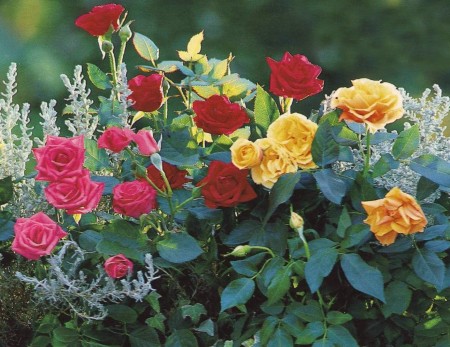
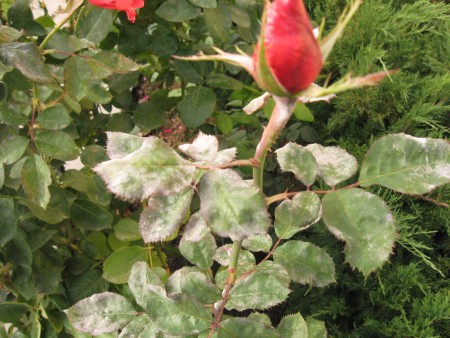

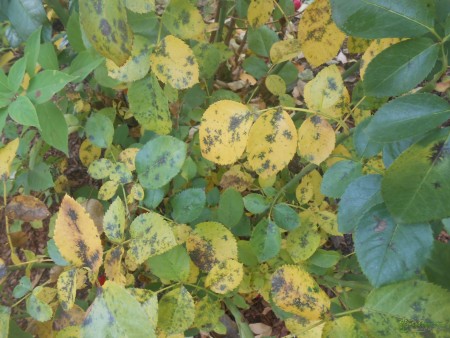
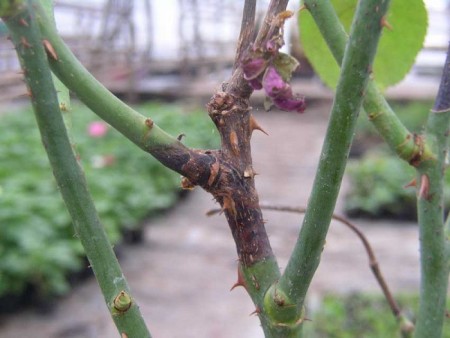
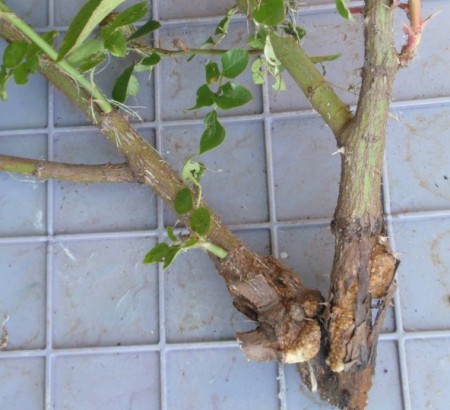
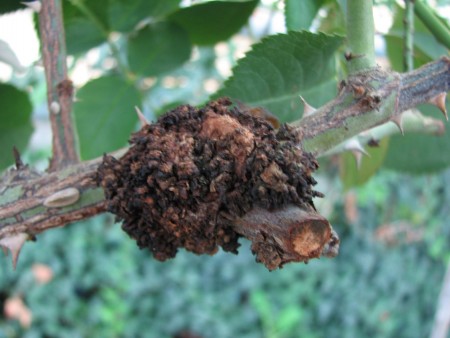
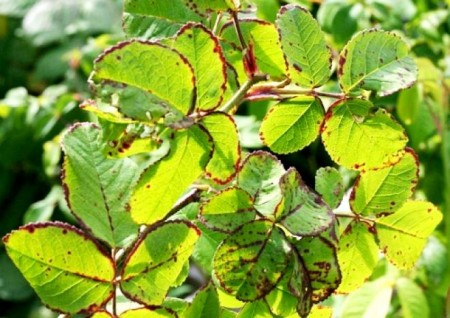
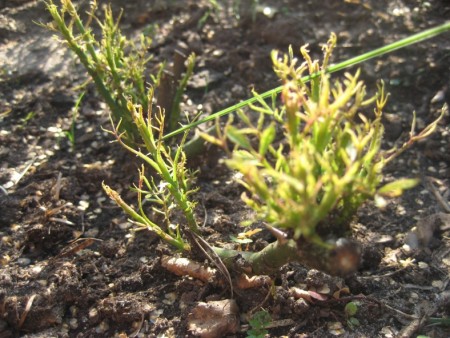
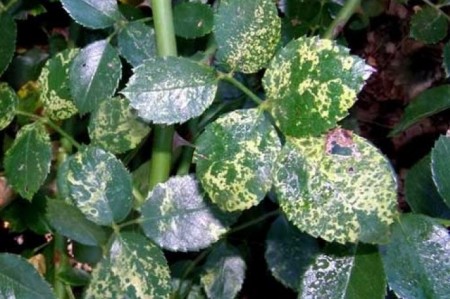

 CUCUMBERS NEVER GET SICK, I'VE BEEN USING ONLY THIS FOR 40 YEARS! I SHARE A SECRET WITH YOU, CUCUMBERS ARE LIKE THE PICTURE!
CUCUMBERS NEVER GET SICK, I'VE BEEN USING ONLY THIS FOR 40 YEARS! I SHARE A SECRET WITH YOU, CUCUMBERS ARE LIKE THE PICTURE! You can dig a bucket of potatoes from each bush.Do you think these are fairy tales? Watch the video
You can dig a bucket of potatoes from each bush.Do you think these are fairy tales? Watch the video
 How our fellow gardeners work in Korea. There is a lot to learn and just fun to watch.
How our fellow gardeners work in Korea. There is a lot to learn and just fun to watch. Eye trainer. The author claims that with daily viewing, vision is restored. They don't charge money for views.
Eye trainer. The author claims that with daily viewing, vision is restored. They don't charge money for views. A 3-ingredient cake recipe in 30 minutes is better than Napoleon. Simple and very tasty.
A 3-ingredient cake recipe in 30 minutes is better than Napoleon. Simple and very tasty. Therapeutic exercises for cervical osteochondrosis. A complete set of exercises.
Therapeutic exercises for cervical osteochondrosis. A complete set of exercises. Which indoor plants match your zodiac sign?
Which indoor plants match your zodiac sign? What about them? Excursion to German dachas.
What about them? Excursion to German dachas.
I love roses and feel very sorry for them when they are attacked by some kind of nasty thing. In your article I received a lot of advice on how to treat my favorite roses. I read a lot on the Internet on this topic - your article and here is another good one, they turned out to be useful. Thanks again for the advice.